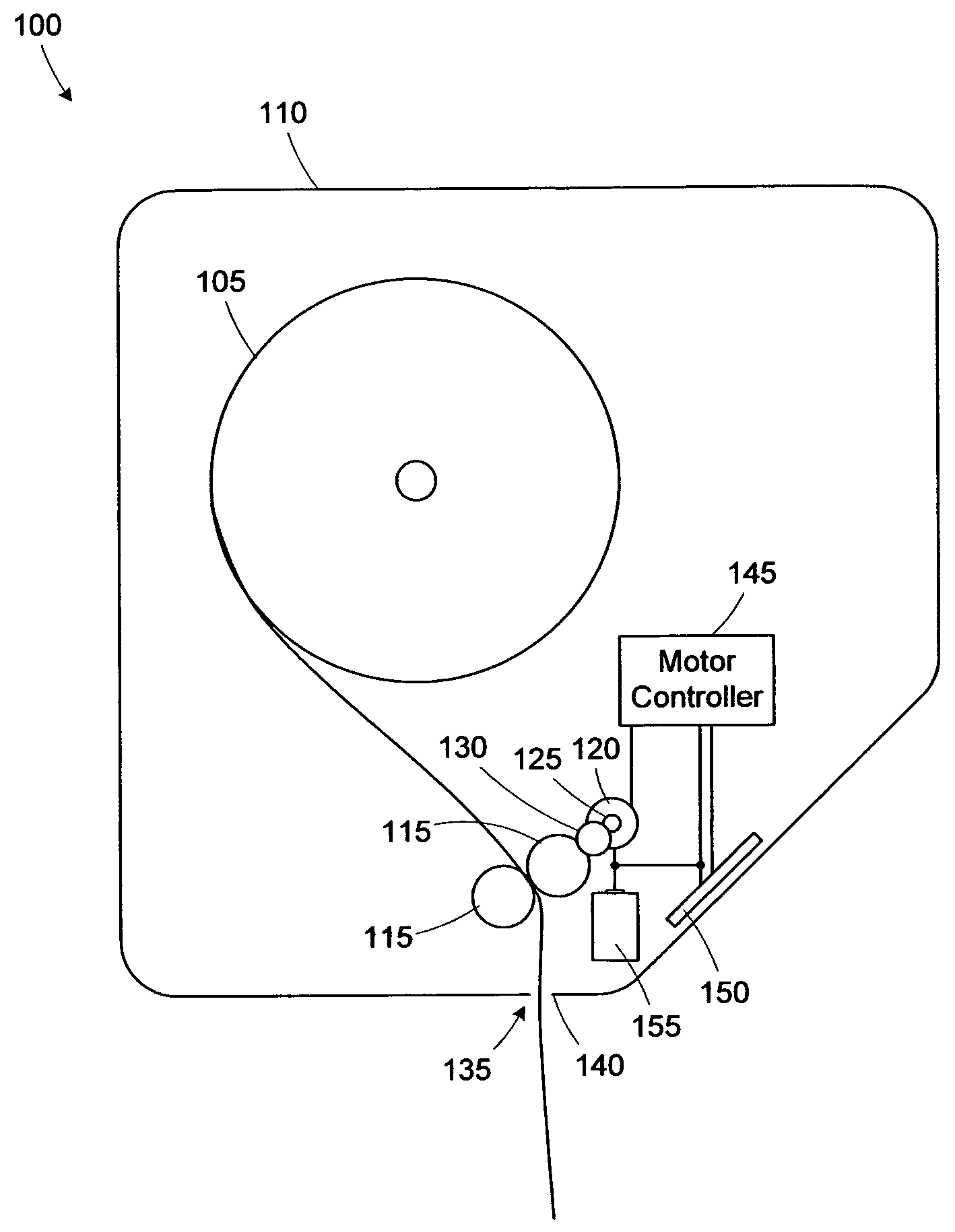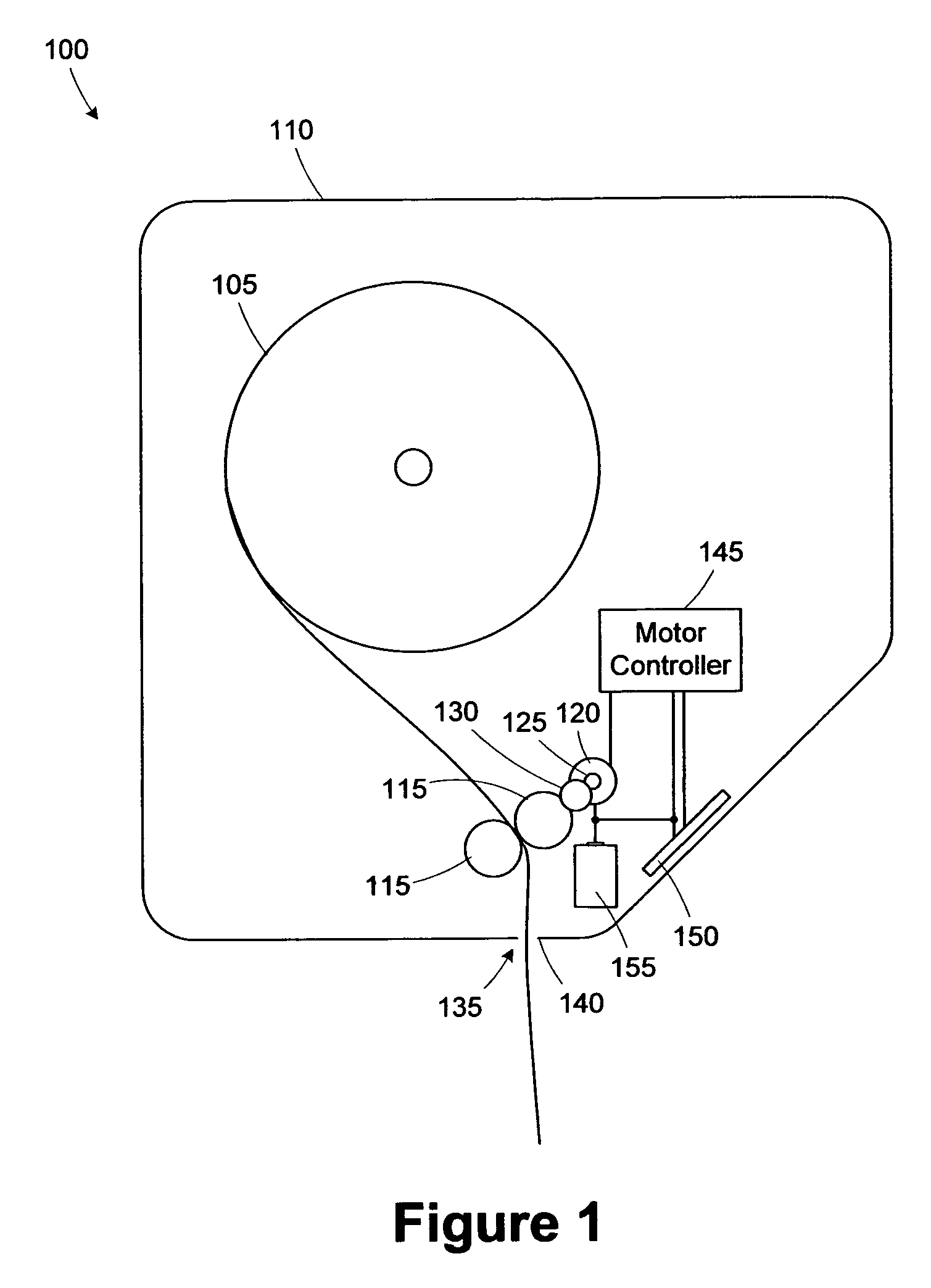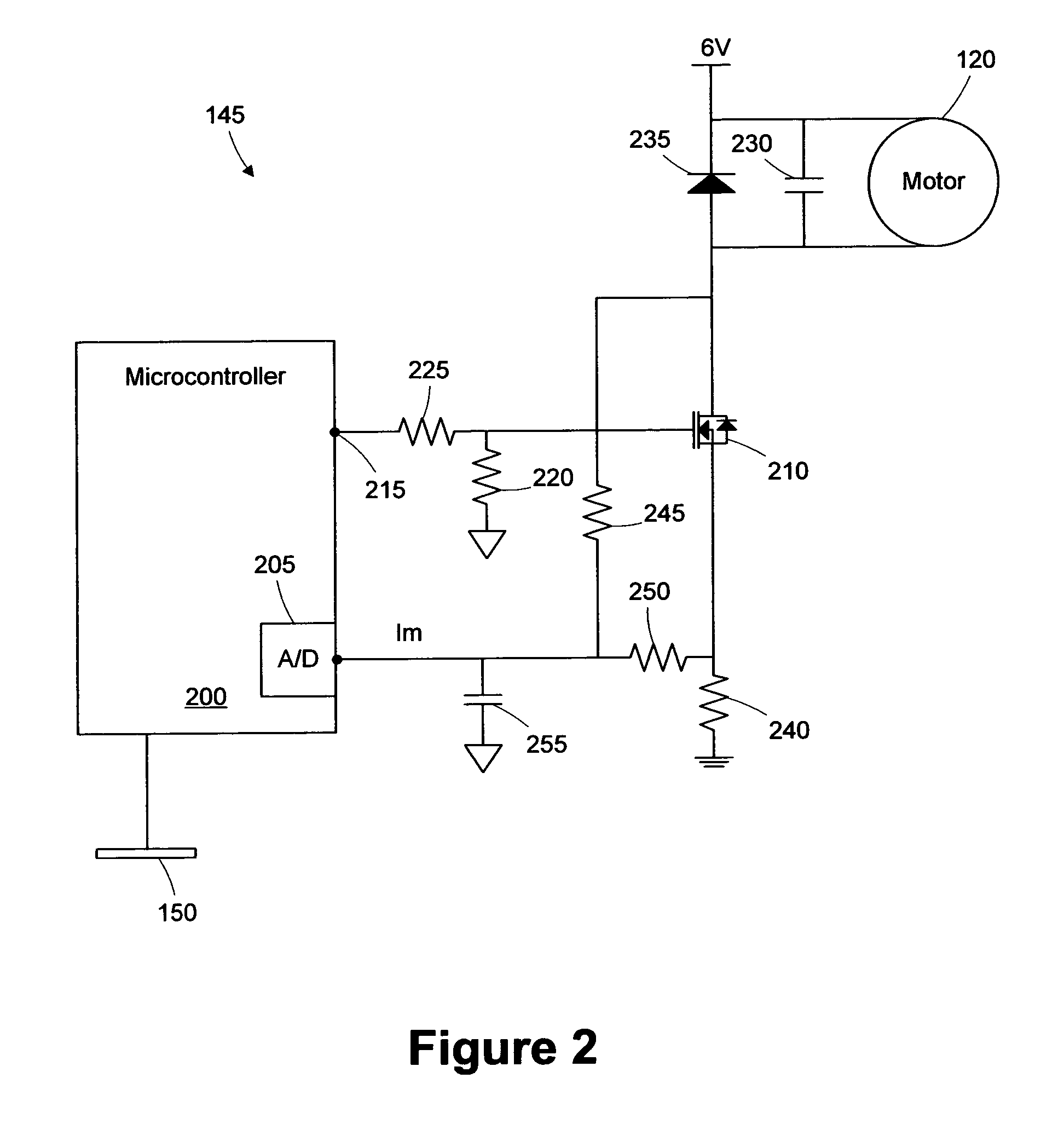Method and apparatus for controlling a DC motor by counting current pulses
a dc motor and current pulse technology, applied in the direction of motor/generator/converter stopper, dynamo-electric converter control, ac motor stopper, etc., can solve the problems of increasing material costs, wide variation in motion amount, and increasing paper usag
- Summary
- Abstract
- Description
- Claims
- Application Information
AI Technical Summary
Benefits of technology
Problems solved by technology
Method used
Image
Examples
first embodiment
[0040]In a first embodiment, detailed in FIGS. 5A and 5B, the motor controller 145 is configured to control a motor 120 without a significant coasting period. Hence, the motor pulses are only counted during the motor on interval 300 of FIG. 3A. FIG. 5A represents the logic implemented by the motor controller 145 in the READY state of FIG. 4A at marker R, and FIG. 5B represents the logic implemented in the MOTOR_ON state at marker M.
[0041]In block 500, the motor controller 145 detects a transition of the control signal provided by the proximity sensor 150 of FIG. 1 indicating that an activation of the paper towel dispenser 100 is desired. If no control signal is detected, the motor controller 145 transitions back to the loop marker L. After detection of the control signal, the CONTROL_STATE is changed to MOTOR_ON in block 502. In block 504, the MOTOR_PULSES, PULSE_LEVEL, and PREVIOUS_LEVEL variables are initialized to zero, and the Im_REFERENCE variable is initialized to 250. The ini...
second embodiment
[0043]In a second embodiment, detailed in FIGS. 6A and 6B, the motor controller 145 is configured to control a motor 120 with an appreciable coasting period. Hence, the motor pulses are counted during the motor on interval 300 of FIG. 3A and during the motor off interval 305 while the motor is coasting. FIG. 6A represents the logic implemented by the motor controller 145 in the READY state of FIG. 4A at marker R, and FIG. 6B represents the logic implemented in the MOTOR_ON state at marker M.
[0044]In block 600, the motor controller 145 detects a transition of the control signal provided by the proximity sensor 150 of FIG. 1 indicating that an activation of the paper towel dispenser 100 is desired. If no control signal is detected, the motor controller 145 transitions back to the loop marker L. After detection of the control signal, the CONTROL_STATE is changed to MOTOR_ON in block 602. In block 604, the MOTOR_PULSES, PULSE_LEVEL, and PREVIOUS_LEVEL variables are initialized to zero, ...
third embodiment
[0048]In a third embodiment, detailed in FIGS. 7A, 7B, and 7C, the motor controller 145 is configured to control a motor 120 with an appreciable coasting period and a period where the motor current drops to a level where it is difficult to detect pulses (e.g., at steady state). Hence, the motor pulses are counted during at least a portion of the motor on interval 300 of FIG. 3A and during the motor off interval 305 while the motor is coasting. The speed pulses 320 are counted to determine a motor pulse rate for the immediately previous low pulse signal interval 315 to approximate the pulses that occurred therein. FIG. 7A represents the logic implemented by the motor controller 145 in the READY state of FIG. 4A at marker R, and FIGS. 7B and 7C represents the logic implemented in the MOTOR_ON state at marker M.
[0049]In block 700, the motor controller 145 detects a transition of the control signal provided by the proximity sensor 150 of FIG. 1 indicating that an activation of the paper...
PUM
 Login to View More
Login to View More Abstract
Description
Claims
Application Information
 Login to View More
Login to View More - R&D
- Intellectual Property
- Life Sciences
- Materials
- Tech Scout
- Unparalleled Data Quality
- Higher Quality Content
- 60% Fewer Hallucinations
Browse by: Latest US Patents, China's latest patents, Technical Efficacy Thesaurus, Application Domain, Technology Topic, Popular Technical Reports.
© 2025 PatSnap. All rights reserved.Legal|Privacy policy|Modern Slavery Act Transparency Statement|Sitemap|About US| Contact US: help@patsnap.com



